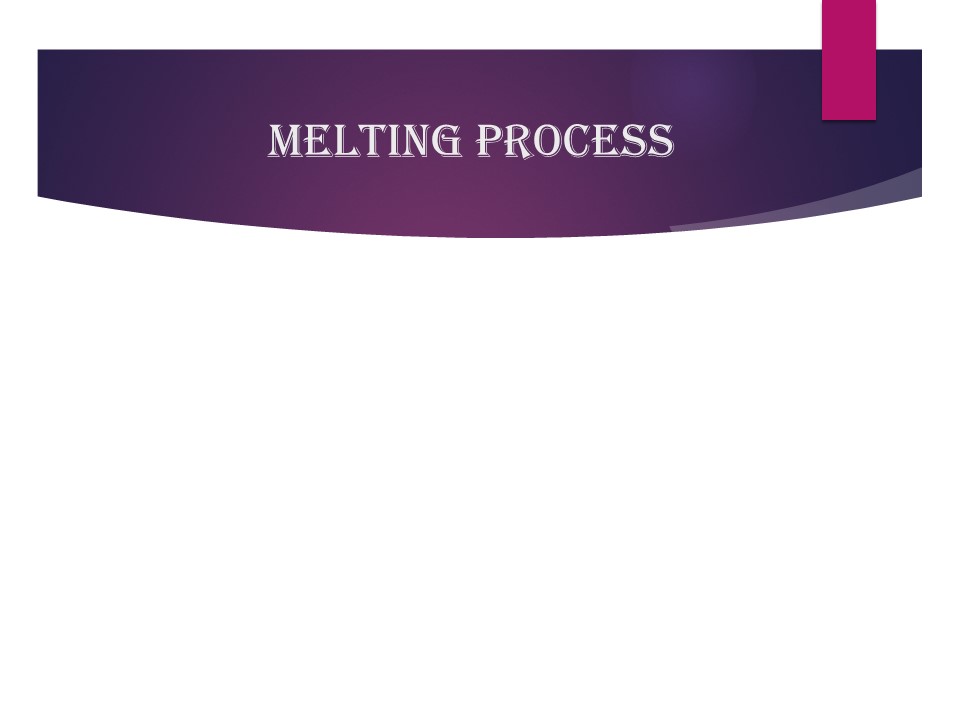MELTING PROCESS - PowerPoint PPT Presentation
Title:
MELTING PROCESS
Description:
Detail explanation of melting process – PowerPoint PPT presentation
Number of Views:14
Title: MELTING PROCESS
1
MELTING Process
2
Introduction
- The preparation of molten metal for casting is
referred to simply as melting. - Casting processes involve the use of molten
material, usually metal. - This molten material is then poured into a mould
cavity that takes the form of the finished part.
The molten material then cools, with heat
generally being extracted via the mould, until it
solidifies into the desired shape.
3
Procedures for melting operation
4
Melting
- Melting, also called fusion, is a transition
process that changes metal material status from
solid to liquid by providing enough heat. - Melting, or fusion, is a physical process that
results in the phase transition of a substance
from a solid to a liquid. - Chemical changes involve either absorption of
heat or the release of heat. So melting is an
endothermic process.
5
Coreless induction furnace
- Coreless induction furnaces are widely used in
steel and alloy production due to
their flexibility and handling capabilities. - The magnetic field induces eddy currents,
circular electric currents, inside the metal, by
electromagnetic induction.
6
Induction furnace
- An induction furnace is an electrical furnace in
which the heat is applied by induction heating of
metal. Electric induction furnace is type of
melting furnace that uses electric current to
melt the metal. - Induction furnaces are used in most modern
foundries as a cleaner method of melting metals. - The basic Principle induction furnace is a
induction heating.
7
Figure
8
Refractories
9
Induction furnace units
- Transformer unit
- Crucible unit
- Cooling unit
- Hydraulic unit
10
Transformer
- Based on the capacity of the power sharing it can
be classified into two types - Mono track
- A two furnace installation will have a single
power pack and either changeover switch is
provided. - Dual tack
- It is a power sharing that is where the one could
be run at full power and no full power is
supplied to second furnace but it holds the power
level and keeps in a certain temperature.
11
Stirring
- Once the molten is occurred, the high frequency
magnetic field is produced. - So it can also be used to stir the hot metal,
which is useful in ensuring that alloying
additions are fully mixed into the melt. - This process is called electromagnetic stirring.
12
Thermocouple
- An electrical device for high-temperature
laboratory furnaces. - We are using type R and type S for measuring
temperature.
Type R Type S
Platinum - 87 Rhodium - 13 Platinum - 90 Rhodium - 10
13
Chemistry control
- There are two types of chemical control by
physical and chemical reaction method. - In physical method they are classified into two
types - Adding
- Dilution
- Adding means by adding the elements.
- Dilution means removing the excess elements in
the molten metal. - So, we are making chemistry low as possible.
14
Load calculation
- Charge calculation
- (Aim Actual) Furnace capacity/Recovery
- For example
- In WCB the carbon percent is 0.25 but actual
present is 0.15. So, we need the charge
calculations. - C (0.25-0.15)3000/100
- C3kg
15
- Thank
- you

